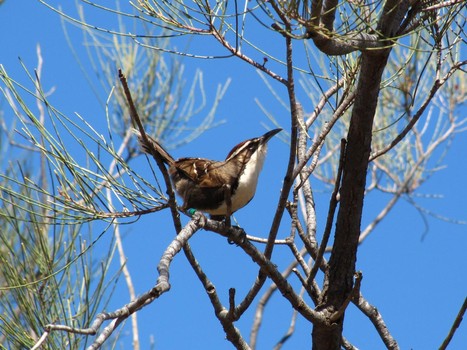The stringing together of sound to create different meaning was thought to be a human’s only province but new research has found that the chestnut-crowned babbler of Australia can alter the pattern of sounds it makes to fit different situations. Sabrina Engesser from the University of Zurich and Professor Andy Russell from the University of Exeter reported the find in the edition of the journal PLOS Biology. This is the first known bird ever found that possesses the rudiments of language.
Chestnut-crowned babblers do not sing like most birds. Most birds that sing do not convey any change in the message to other birds by changing the arrangement of sounds in their songs but the chestnut-crowned babbler does. Chestnut-crowned babblers make a distinctive set of sounds that can be altered to indicate different circumstances to other birds.
The researchers observed two different patterns in the “speech” of chestnut-crowned babblers. The difference in the arrangement of two sounds designated as A and B were observed by the researchers. The birds produce an AB call when flying and a BAB call when feeding chicks in the nest. The researchers replicated the calls in a controlled environment and caused a test group of birds to look to the sky when they heard the AB call and to look at a nest when they heard the BAB call.
Rearrangement of the A and B sounds did not elicit the response that the normal calls do. The “language” of the chestnut-crowned babbler is obviously not as complex as human or primate communication. The study may have found the rudimentary source of language development in animals that resulted in human speech over the course of eons of evolution.















